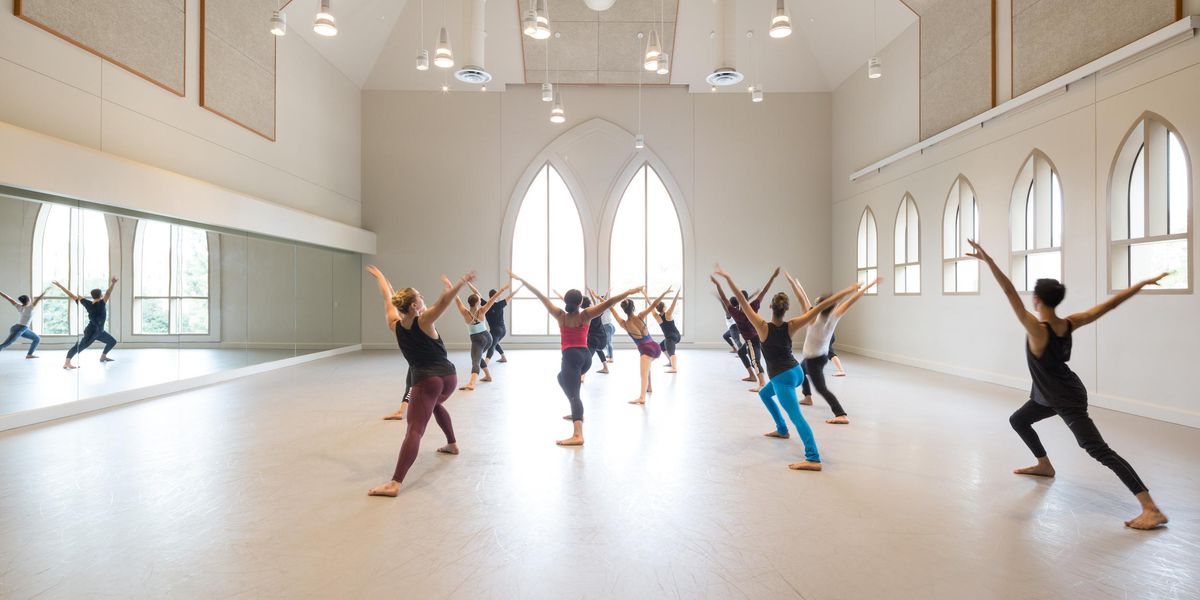Give Me a Break
At 32 years old, Chip Abbott made his Broadway debut in “On the Town.” Photo by Jenny Anderson, Courtesy “On the Town.”
When dancers dream of the career that lies ahead, they probably plot a linear path from pre-professional training to prestigious apprenticeships to dream companies and roles. But as many quickly learn, the road to success is rarely that straight. It can take a few years after graduation to figure out how you fit into the dance world, or brush up on technique or artistry. Dance Magazine spoke with three dancers on how they persevered through years of rejection, and what it felt like to finally book their dream jobs.
Chip Abbott
Assistant choreographer, dance captain and swing
On the Town
At age 24, Chip Abbott was doing the New York City freelance shuffle, dancing for The Chase Brock Experience, among other troupes. But it was his musical theater gigs—something he originally thought of as more of a supplemental income than a passion—that made him realize his true calling. “I was able to feed the part of my soul that wanted to do really intense, athletic dancing, but I had lines and a character,” he says. Playing A-Rab, a Jet in choreographer Joshua Bergasse’s production of West Side Story at the Fulton Opera House in Lancaster, Pennsylvania, confirmed his epiphany. “Josh pushed me really hard,” Abbott recalls. “Working with him taught me that you can do whatever you want, you just have to focus. That was really a turning point.”
For the next few years, Abbott booked a steady number of regional musicals, hoping someday for a Broadway contract. Then, his momentum suddenly stalled. Audition after audition, he got cut with the same disheartening feedback: “You’re not the right type.” Abbott’s hair was thinning, and while at 29 he was young enough for featured roles, he was no longer suited to them. “I wanted to quit,” he recalls. “I thought, I’m over the business. But the most valuable lesson from those two years is that the only thing you can do is be you. If it sticks, it sticks. If it doesn’t, there’s going to be another audition.”
Throughout the years, Abbott kept in touch with Bergasse, who was steadily rising in the theater scene. That connection led to him being cast in the ensemble of Bergasse’s On the Town at the Barrington Stage Company in Pittsfield, Massachusetts. When On the Town was picked up for Broadway last fall, Abbott was kept on and given the job of dance captain. At 32, it was his Broadway debut. Getting the call “was incredible,” he says. “I’d waited so long, and for it to happen with a choreographer I respect was overwhelming.”
Kriston in Pilobolus’ “Licks.” Photo by Grant Halverson, Courtesy Pilobolus.
Jordan Kriston
Dancer
Pilobolus Dance Theater
As a kid, Jordan Kriston loved the outdoors and played baseball, basketball and volleyball. She didn’t fully dive into dance until she enrolled at Arizona State University. After graduating in 2006, she bought a one-way ticket to New York City to take class and scour the call-boards.
But the life wasn’t as dreamy as she’d imagined. Because of her late start, “I got told over and over and over, ‘You have a great look, but you don’t have the technique,’ ” says Kriston. “It made me mad at first, but then it became my fuel.” She stayed motivated with pickup gigs with H.T. Chen & Dancers and Douglas Dunn & Dancers and paid the bills by serving at a restaurant and dancing as a crowd motivator at bar mitzvahs.
The routine continued for three years. It wasn’t until she saw a Pilobolus Dance Theater performance on her 24th birthday that she realized she might have been auditioning for the wrong kind of work. “I noticed there wasn’t a whole lot of classical technique in the show,” she says. “I thought, Maybe this is something I can do and no one will tell me I don’t have enough technique.”
She went to Pilobolus’ next NYC audition, but was unprepared for the three eight-hour days of improvisation. “I was overwhelmed by the vulnerability of improv. It made me question, How do I not know how to do this?” she says.
Kriston made it to the final 30 women of 300, but didn’t get the job. So she spent the following year practicing at contact-improv jams. When she returned to the Pilobolus audition the next year, she was a different dancer. “I had an extremely intense improv with two of the associate directors, Matt Kent and Renee Jaworski. The room was silent after we were done,” she says. “I didn’t know if it was good or bad, but something happened.” This time, at 26, she was hired.
Through the years of struggle, she says she learned not to blame anyone else for what was going on in her life. “You can’t sit at home obsessing about how it’s not working out. You’ve got to get up every day and make something happen.”
Israel Garcia Chenge and Griffith in Michael Pink’s “Aubade.” Photo by Petr Zahradnicek, Courtesy Milwaukee Ballet.
Alana Griffith
Artist
Milwaukee Ballet
L.A. native Alana Griffith finished high school a year early to enroll at the English National Ballet School and jump-start her career. In her third year there, Griffith became a member of ENB’s second company, dancing roles like the Golden Vine Fairy and Little Red Riding Hood in Sleeping Beauty.
But at the end of that season, Griffith wasn’t offered a contract. With no way to obtain a work visa, she returned home. Her years abroad had boosted her technique, but it also meant she had very few connections in the U.S. At 20, when many ballet dancers already have solid corps positions, she essentially started over. “It was my first year auditioning, and I didn’t know what it was,” she admits. “You go into company class, you don’t know anyone and you want to be seen—that was difficult for me. It was hard to go to all these places and get rejected.
When Nevada Ballet Theatre offered her a traineeship, she jumped at the opportunity. Some might say that she was taking a step back, but the intimate environment turned out to be exactly what she needed. “I learned what a director expects of you and how to work alongside such talented dancers,” she says. She brought a new maturity to auditions the next year. “I wasn’t just a student anymore. I had more on my resumé and more confidence. I was also more hungry for it.”
That season, she was offered a position with Milwaukee Ballet II and today, Griffith, 23, is an artist with the main company. Her advice to struggling dancers: “Really assess your strengths and weaknesses, and how they correspond with a company. Keep going, and know that there is a place for you.”
Claudia Bauer is a frequent contributor to
Dance Magazine.





